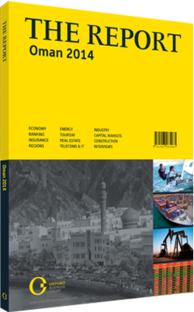OBG talks to Ahmed Akaak, Acting CEO, Port of Salalah

Interview: Ahmed Akaak
How will the GCC railway help relieve congestion and boost efficiency in Oman’s logistics sector?
AHMED AKAAK: The railway will not only lessen the impact of congestion, it is also a key development for the country’s ports. At the moment, 50% of local cargo comes into Sultan Qaboos (SQ) Port, around 25% into the Port of Salalah and 25% into the Port of Sohar (PoS). Of the 75% that comes into SQ Port and PoS, the vast majority of the cargo comes from Dubai’s Jebel Ali. In essence, the Omani market is supported by Dubai.
The GCC railway will allow this to change. It will provide a cost-effective and fast mode of transportation that has been used in Europe and the US to take advantage of supply-chain connectivity. Road transport in Oman is currently uneconomical and too slow. The railway will add value to Oman’s development and offer the opportunity to become a gateway into the rest of the region. It will also be the fastest means of transport for the GCC region to reach the rest of the world, and vice-versa, all the while relieving congestion and increasing logistical efficiency.
As Oman focuses on diversifying its economy, what value-added segments have the ports and the logistics sector created to support this cause?
AKAAK: A port on its own is nothing – it is all about multi-modal connections. The Port of Salalah, for example, is part of a global market that is interconnected within Oman. It thereby provides partners such as shipping lines greater value through increased activity. A good example of this is the Octal plant in Salalah that reaches global markets which would not otherwise be possible. So, Salalah is a really good example of the value-added benefits of well-connected and well-served ports, and the ability they provide for global distribution. Alternatively, and if you are looking to access and serve the Omani market and the southern Gulf, the PoS gives access to the most important industrial areas of the sultanate, as well as direct access to the UAE and beyond. For this reason, many companies have set up logistics operations out of Barka, Sohar and Muscat. The Port of Duqm, meanwhile, is central to accessing important natural resources. Taken together, each port has its own priorities and value propositions for different businesses. This is, of course, all part of diversification away from oil and gas, although some of the opportunities are downstream.
What forms of logistics have been integrated to prepare the sultanate to operate both as a hub in the GCC and a global player in the supply chain?
AKAAK: We are currently experimenting with sea-to-air transportation. This is, again, connecting networks to networks. At this point in time it is about linking up Oman Air’s networks to the ocean-going networks that enter through Salalah. To date, this has not really had a value proposition in the sultanate because we do not have significant connectivity on the water side.
The other area of interest relates to land transportation, which is connecting population centres to ports and markets. The road network is generally well maintained, though in some areas it is currently overburdened and in the process of being upgraded. In this regard, the Batinah Expressway project is making considerable strides and preparing for the closure of SQ Port. In order for the sultanate to allow for a larger quantity of goods to start entering from Sohar into the Muscat market, we must improve road infrastructure; this in turn will support growth. Again, the GCC railway will be a major step forward in the integration of Oman’s logistics and the country’s ability to take on multi-modalism. While the Oman Logistics and Supply Chain Association has been set up, it is still just 18 months old. The focus has mostly been on transport, which means trucking and moving goods from A to B rather than taking full advantage of all the different modes of transportation capable of reducing costs and increasing turnaround time. Notwithstanding, there are lots of opportunities to leverage in making Oman a strong supply-chain player in both the GCC and globally.
You have reached the limit of premium articles you can view for free.
Choose from the options below to purchase print or digital editions of our Reports. You can also purchase a website subscription giving you unlimited access to all of our Reports online for 12 months.
If you have already purchased this Report or have a website subscription, please login to continue.

